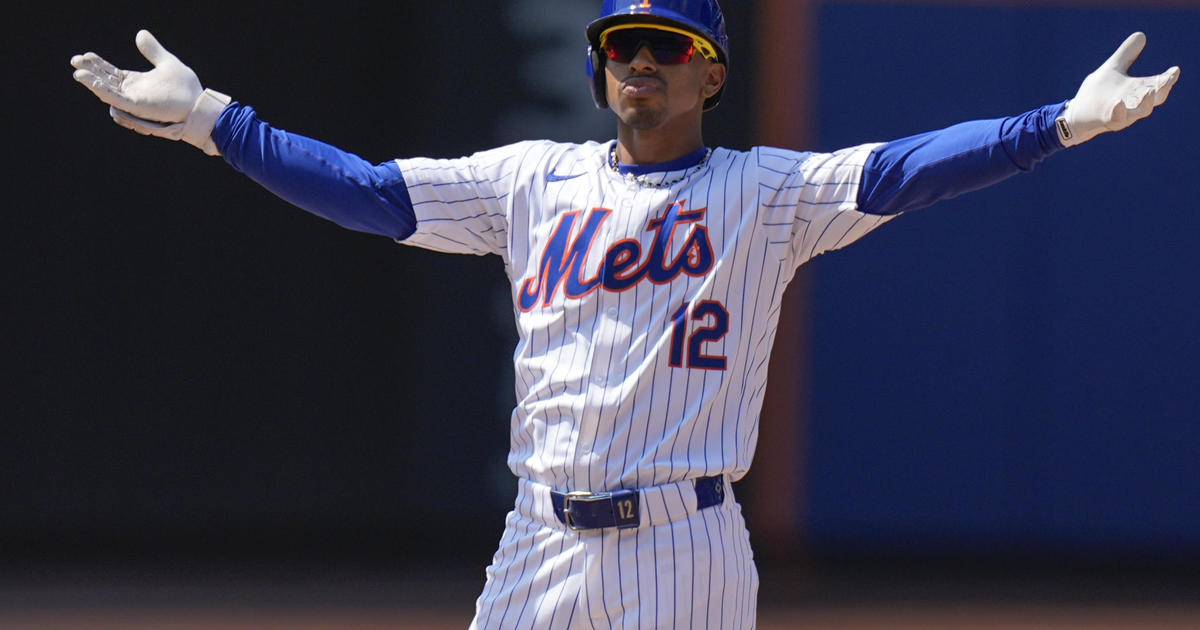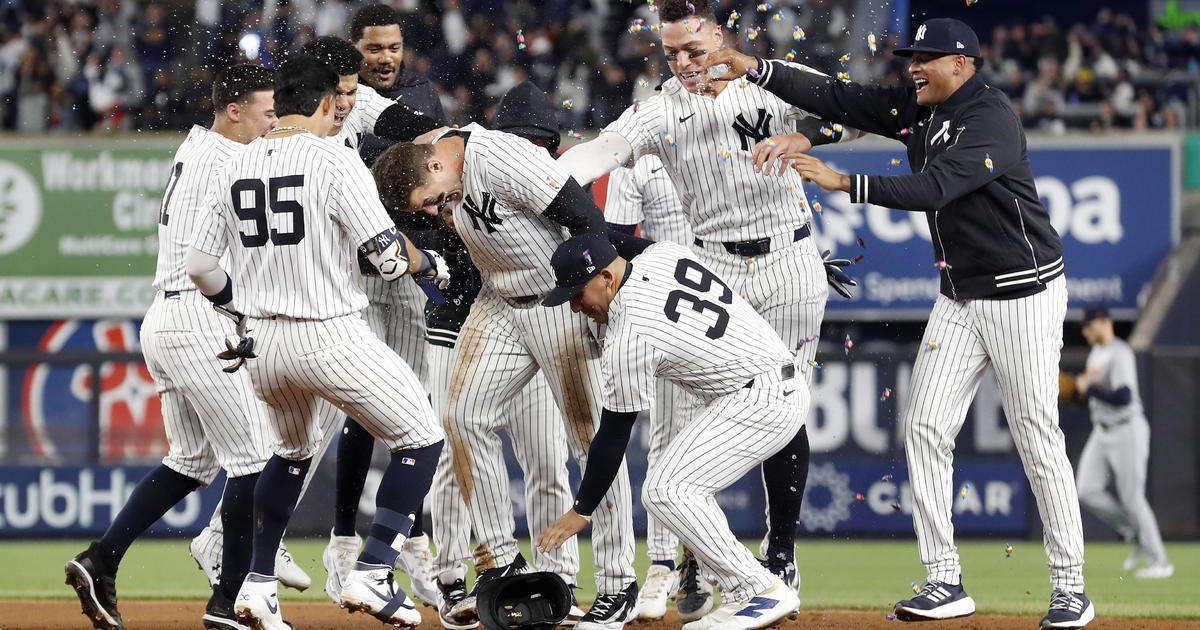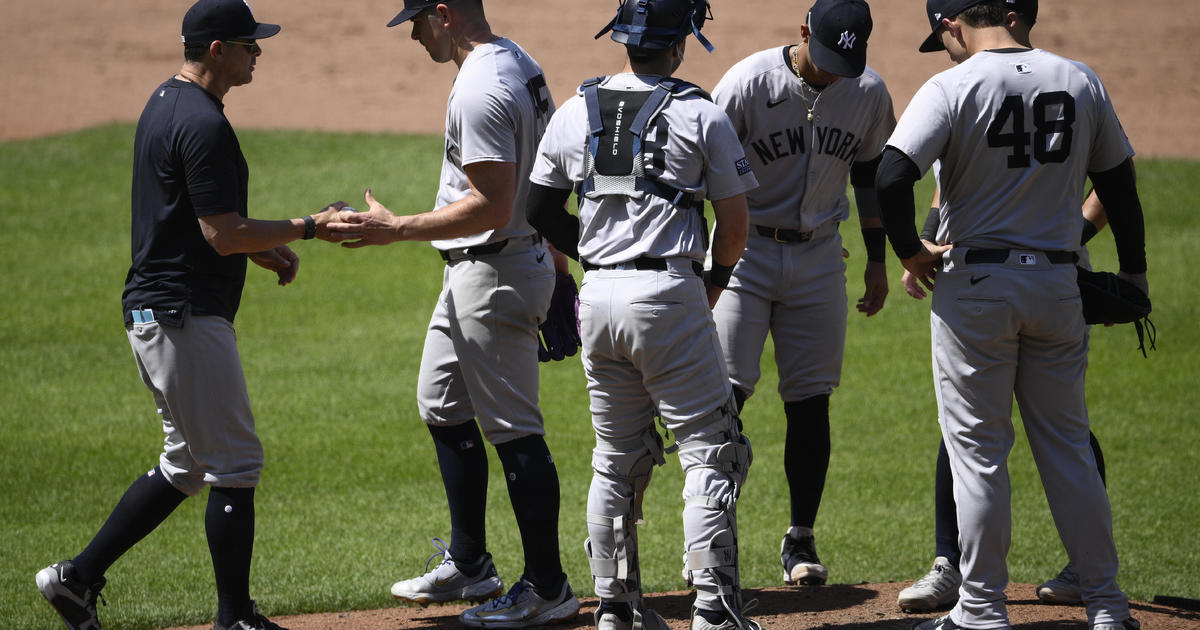Keefe To The City: Mixed Reviews
When the Yankees signed Johnny Damon on December 20, 2005, I had mixed emotions. And when the Yankees played their 2006 home opener on April 11 against the Royals, I wasn't sure if I was supposed to be happy or unhappy that Damon had become the Yankees center fielder. But the rest of Yankee Stadium apparently had the same emotional conflict as me since the introduction of Damon resulted in a combination of applause, boos, cheers and obscenities. It was the perfect display of all the confusing emotions Yankees fans were feeling after everything that happened between Damon and Yankees since that forgetful October night in 2004.
On October 20, 2004 there was a better chance of me hitting the Power Ball on back-to-back-to-back weeks than there was of me forgiving Johnny Damon for those two home runs and six RBIs. But time heals all wounds, as do postseason home runs, double steals against the Phillies in the World Series and the end to an eight-year championship drought. I couldn't stay mad at Johnny forever.
Johnny grew on me. He grew on every Yankees fan. He was everything that every baseball fan wants in a player on their team: clutch, charismatic, personable and a winner. Sure, a better arm and being more comprehensible in interviews would have been a plus, but neither of those things really mattered, and they were just used as jokes about Damon's game and personality.
I was sitting in Fenway Park on May 1, 2006 when Johnny returned to the place that made him a household name and a baseball celebrity. Here was one of the faces of the Red Sox franchise and a symbol of the reversal of fortunes in the AL East over the last few seasons, now playing center field and batting leadoff for the Yankees.
(On an unrelated side note: This game also happened to be the game in which the Red Sox traded back with the Padres to reacquire Doug Mirabelli to catch Tim Wakefield. Mirabelli was given a police escort from Logan Airport to Fenway Park, like he was the President of the United States, so he could arrive in time for the game. On May 1, 2006 Mirabelli was probably ranked 750th out of the 750 players in Major League Baseball that a team would be willing to arrange a police escort for to make sure they arrive in time for a game. Only in Boston.)
Every Red Sox fan with a Damon jersey or T-shirt had tried to salvage their wasted investment by changing the nameplate on the back to "Judas" or "Demon." And for those with the home No. 18 Red Sox jerseys, they just needed to wait a year to have a Daisuke Matsuzaka jersey rather than a Johnny Damon jersey. The way an entire city can buzz for a postseason game, Boston was buzzing for the return of a player they were responsible for building into a star and a commodity in the league. The city of Boston has a different feel to it when the Yankees are in town (especially when they are in town for the first time in a season), but this was different. This was the first Yankees visit of the season on HGH.
There wasn't a person in the world who thought that Damon would be received warmly. The best Damon could hope for was the same combination of cheers and boos that he received when he made his debut in pinstripes just under a month earlier. But what unfolded was the worst-case scenario Damon could have asked for, even though he had $52 million reasons to laugh at the Fenway Faithful and give them the Jack McDowell treatment.
When Johnny stepped into the box to lead off the game, he quickly stepped back out to acknowledge the crowd that was desperately trying to make him regret his decision to not return to the Red Sox for less money. To this day, I'm not sure if Johnny heard applause from those sitting around home plate or if his gesture was simply to taunt the Commonwealth of Massachusetts, but Damon pulled off his batting helmet and raised it to the crowd, recognizing each area of the park in what was the most awkward and strange response to an ovation in history. And when Damon took the field in the bottom of the first, he was showered with United States currency, as dollar bills were launched from the outfield seats and swirled around him in center field.
This brings us to Monday night in the Bronx, where Damon was now returning to his most recent former home, but for completely different reasons and for a team that Yankees fans could care less about unless we're talking about the 2006 ALDS.
Damon was given a proper reception as Yankee Stadium welcomed Damon and his new-look Mohawk back to the Bronx. Damon responded by stepping out of the box and raising his helmet to the crowd, the same way he did in Boston four and a half years ago. Except this time, Johnny didn't look happy to be wearing the uniform he had on.
When Damon's acknowledgment of the crowd reached the first base side and he looked in the Yankees dugout, he gave a gesture to his odd haircut and gave that "Johnny Damon smile" that I hadn't seen since he was busy taking a champagne shower last October. Being back in New York and playing for a third-place team just playing out the string and playing against a first-place team that he could have been part of, you can't help but think that Johnny was thinking the same thing as every Yankees fan: "Why couldn't we have worked it out?" And with the Yankees scoring one run in their last two games, and their newest DH experiment, Lance "The Dance" Berkman failing miserably and now injured and Curtis Granderson struggling during his first season in New York, it's hard not to think of Damon batting behind Derek Jeter and ahead of Mark Teixeira on the 2010 Yankees.
Johnny was given The "We Hated You, Then We Loved You, Now We Miss You" Ovation on Monday night in the Bronx, nearly six years after he probably would have mysteriously disappeared had he gone out in New York City alone.
Johnny isn't the only former Yankee in recent years to attract attention (positively or negatively) in his return to the Bronx. Here are some other recent memorable ovations:
The "Thank You For Everything" Ovation
Hideki Matsui reached the World Series with the Yankees in his first season with the Yankees, and at the time, it looked like he would help the Yankees create an extension of the dynasty that ended in 2001. No one would have guessed after Matsui's first season with the Yankees that neither he nor the Yankees would return to the World Series for six more years.
Seeing Matsui wear another uniform in the majors just over five months after he was busy peppering the right field seats at Yankee Stadium against Pedro Martinez in Games 2 and 6 of the World Series and winning the World Series MVP, was an uncomfortable sight. But during the Yankees' home opener this season, Matsui returned as a member of the hated Angels, wearing No. 55 and making Brian Cashman rethink Nick Johnson Part II.
Matsui was a class act during his seven seasons in New York. If I had to sum up Matsui's class and character during his seven seasons in New York, I think it would be the play from the first inning against the Red Sox on May 11, 2006 at Yankee Stadium.
That night, Mark Loretta lined a ball off Shawn Chacon to left field and Matsui raced in to make a sliding dive attempt, but he was unable to hang onto the ball, and instead trapped it. Realizing he didn't make the catch, Matsui retrieved the ball and threw it into the infield, but something wasn't right. Following the play, the game was delayed as Matsui was tended to after apparently being injured on the sliding attempt. I was sitting in the right field bleachers at the time and my friend Scanlon, who was watching the game at home, texted me saying "Oh my god." I responded by saying "Matsui needs to get up and stop delaying the game" (I was half kidding and half serious). He responded by saying, "No. You don't understand."
Right now, try to push your left hand back to your left forearm. Didn't get far, did you? Well, Matsui did on that play. When I got home from the game, I saw the slow-motion replay that showed Matsui's wrist bend completely backwards underneath his body after the failed catch attempt. His wrist was hanging limp almost as it was lifeless, and seeing it in slow motion did to my stomach was Cafe Patron does. Yet somehow, despite basically detaching his left wrist from his body, Matsui still had the focus and will to find the ball on the play and fire it back into the infield.
Up until that horrific injury, Matsui had never been on the disabled list in his professional life, and Joe Torre had gone out of his way to make sure that Matsui's consecutive game streak between Japan and the majors remained in tact. It crushed Matsui that he couldn't be on the field to help the Yankees and contribute, and more importantly, live up to and earn his $13-million salary that season.
Following his surgery, Matsui gave the following statement/apology:
"I would like to thank Joe Torre from the bottom of my heart for having been considerate of my consecutive games played streak these past several years and for placing me in the lineup every day. I feel very sorry and, at the same time, very disappointed to have let my teammates down."
In this day and age of professional baseball where players milk injuries and collect undeserved and unearned paychecks, here was Matsui genuinely upset that he couldn't take the field everyday, feeling as though he let the Yankees and their fans down as well as his native country of Japan.
That's who Hideki Matsui is, and that's why he got the reception he did this April.
The "You Aren't An Immortal Yankee, But You Are As Close As You Can Possibly Be" Ovation
No one wanted to see Tino Martinez leave the Yankees, but with Jason Giambi entering free agency and just one year removed from winning the AL MVP, and the Yankees failing to win the World Series, it was inevitable. If only the front office had a crystal ball to see the next seven seasons and the demise of Giambi's career and the destruction of his steroid-fill body, maybe that $120 million could have been spent in another way.
When Tino became a Yankee, he had an impossible job: replace Don Mattingly. And a few years down the road, "Player X" will have to do the same at shortstop for the Yankees. The truth is, there is really no replacing any player that served as the most popular Yankee for a generation, but you can certainly make the case that Tino came as close as anyone could have to replacing No. 23 at first base.
I remember being at the Stadium on July 9, 2004. The Yankees were playing Tampa Bay. Tino was in the middle of playing his only season with a lowly Tampa Bay club (an experience he frequently mentions during YES broadcasts when comparing the traditions between the Yankees and Rays and the difference between playing in the Bronx and anywhere else).
The Yankees led 5-3 in the ninth when Julio Lugo doubled off Mariano Rivera to leadoff the ninth. Mariano retired the next two hitters, bringing up Geoff Blum as the tying run with Tampa Bay down to their final out. Lou Piniella pinch hit Tino for Blum to try to tie the game with one swing.
If you were at the game and blind, given the introduction for Tino, you would have thought he was still a Yankee. The only thing missing from "Pinch hitting for Tampa Bay, number 24, Tino Martinez" was The Who's "Baba O'Riley" accompanying Tino's walk to the plate.
On an 0-1 pitch from Mariano, Tino singled to right field, scoring Lugo and closing the Yankees' lead to one run. I am pretty sure it was the first and only time that Yankee Stadium ever celebrated a hit from an opposing player that resulted in a run off Mariano Rivera.
Tino Martinez is one of only a few players who could draw such a reaction.
The "We Used To Love You, Then We Tolerated You, But Now We Hate You" Ovation
It doesn't seem like that long ago that chef hats were being worn throughout the Bronx and "M-V-P" chants became a nightly ritual at the Stadium when Gary Sheffield came to the plate. Then again it was 2004, so maybe it was a long time ago.
I was a Gary Sheffield fan for the simple reason that he was a Yankee. But I wasn't a Sheffield fan because he became part of the problem in the middle of the World Series drought instead of part of the solution. But really I didn't like him deep down because his deal that he negotiated with George Steinbrenner to be a Yankee blocked Brian Cashman from finalizing a deal that would have made Vladimir Guerrero a Yankee.
Sheffield was solid as a Yankee, but like many others from 2002-2008, he was a mercenary that didn't help to deliver on what he was paid to do: win. Unlike Guerrero, who turned 29 just before the 2004 season and could have been a Yankee for an extended period of time, Sheffield turned 35 before he even played a game with the Yankees.
Sheffield had a decent run as a Yankee, but once he left he decided that he would trash the Yankees organization on the way and throw Joe Torre under the bus by calling him a racist. Like a contestant who is kicked off The Bachelorette and suddenly reveals to the camera that they were never interested in the girl they had just been on a reality show on network TV chasing, Sheffield performed a complete 180 once he was dealt to the Tigers, thinking he could salvage his image and come off as the winner in the situation.
Everything he said after the trade made him look immature and childish, which was the way he acted his entire career, starting with admission of throwing balls away while playing third base for the Brewers when he broke into the league. Because of the way Sheff left town, it was no surprise that he became a victim of Bronx cheer when he returned to the Stadium with the Tigers.
Follow Neil on Twitter at http://twitter.com/NeilKeefe



